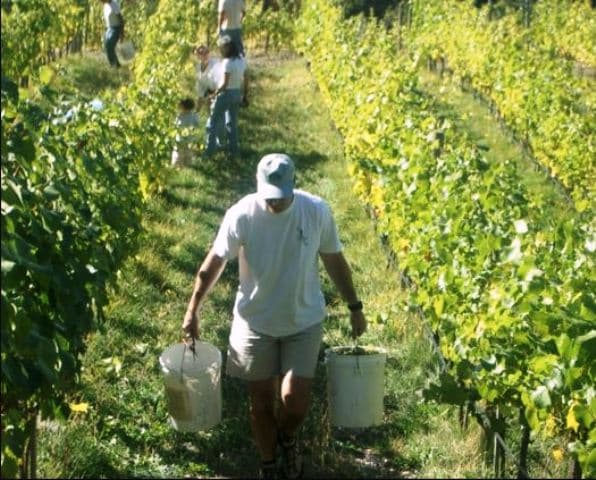Grow's Vineyard Greens, previously named Clover Valley Golf Course, is a Public, 18 hole golf course located in Port Orchard, Washington
The course first opened for play in 1963.
This primarily flat course features a variety of challenging holes. A stream that flows throughout the course comes into play on five holes. Even though the fairways are tree lined, they still afford generous landing areas. The greens are vary between flat and undulating.
Blue tees: par-69, 5,550 yards
White tees: par-69, 5,350 yards
Red tees: par-69, 4,980 yards
The course closed in 2002. The land was purchased in 2003 qnd is now Yangâs Botanical Gardens.
And now the history ______________________________
The headline on the first page of the sports section in the Bremerton Sun on July 13, 1962 reads: "South Kitsap Golf and Country Club Course Opens Tomorrow." Pictured is a nine-hole public course with Salmonberry Creek bordering its edges, that had previously been a dairy farm.
At the time, Bainbridge Island's Wing Point Golf and Country Club (opened in 1903) and Bremerton's Kitsap Golf and Country Club (opened in 1920) were the only two full-length golf courses in Kitsap County.
Early newspaper stories of the new South Kitsap course talk about its lush fairways and ever-improving greens, as well as its two-story, log cabin-style clubhouse. It housed a pro shop on the first floor and a kitchen, bar, banquet area and large fireplace on the second floor.
The South Kitsap Golf and Country Club name didn't last more than a year or two. It was soon renamed Clover Valley Country Club (and eventually Clover Valley Golf Course).
Clover Valley added nine more holes during the mid 1970s, making it a full 18-hole course measuring 5,370 yards.
But this wasn't your typical golf facility. It was par 69 for men and par 70 for women. There were five par-3 holes, including three within a four-hole stretch on the back side. There were few sand bunkers, actually more like "dirt traps" ? and no driving range.
What the course did have in excess was peat and damp terrain, during the wet fall and winter months, Clover Valley became almost unplayable. It was built on a bog that just collected water. It was a very poor place for a golf course.
This was truly a blue-collar course. It was a place to play nine holes after work, it was a convenient, inexpensive afternoon course.
Among Clover Valley's most well-known holes was the horseshoe-shaped 18th, a par 5 which forced golfers to cross a water hazard three times, and the grueling eighth hole, which featured a walk up "heart attack hill" before getting to the green.
Clover Valley underwent its final renaming in 1999 when it became Grow's Vineyard Greens. Owners Myron and Amanda Grow, with help from parents Ron and Ramona Grow, operated the course and planted 2,000 grapevines. The goal was to eventually add a small winery while Myron and Amanda, 24 and 21 at the time, handled the golf end of the business.
The Grows' dream of golf and wine fell apart within three years. The family abandoned the course in 2002 and moved out of the area.
Oddly enough, the course remained on life support for almost a year as a handful of members attempted to keep it playable during the spring and summer of 2002.
With the clubhouse vacant, people who showed up to golf played for free.
Once fall and winter hit, the mowing ceased. The rain came. Nature strengthened its grip. A golf course that was at times unplayable even during its heyday went into hibernation, never to wake up.
Won Yang purchased Clover Valley for $550,000 in 2003.
The clubhouse is refurbished and is used frequently as a reception hall. The sturdy logs used to construct the frame of the facility over 50 years ago are still in place. The second floor offers sparse glimpses of the old course.
Look left and see the No. 10 fairway, now lined with small cedar trees. What was once the No. 9 green now is used for wedding ceremonies, with palm trees bordering the ground.
To the right, in the distance is a rapidly growing bamboo garden, akebia tunnel and rhododendron garden. It's where the front nine made its approach to the clubhouse.
Nailed to a mature fur tree on the property are two white numbers, 1 and 8 (18). The marker is one of the few pieces of evidence that the gardens was once a golf course.
